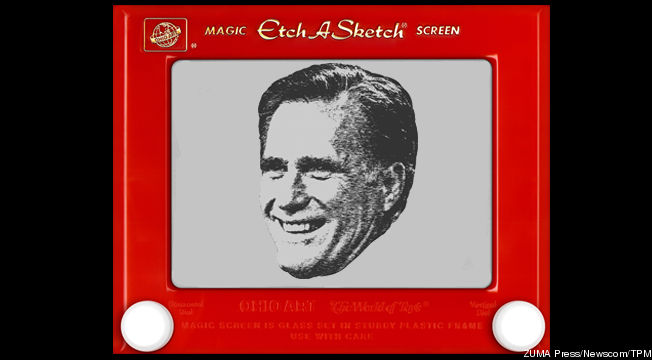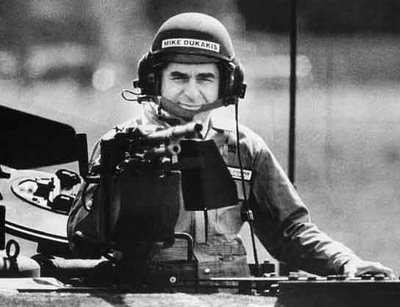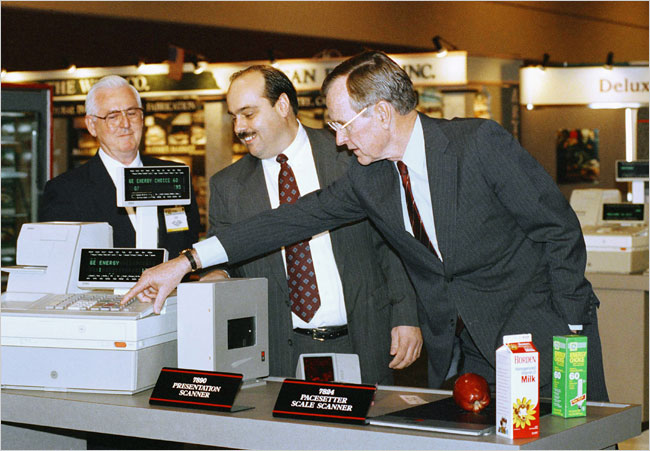Why Mitt Romney’s "Etch A Sketch" Moment Matters
For the past 36 hours, the airwaves have been filled with constant re-airings of the latest gaffe from the Romney campaign – and many pundits are declaring this the worst misstep yet.
The moment occurred when one of Mitt Romney’s top advisors, Eric Fehrnstrom, was interviewed on CNN Wednesday morning. Here’s the exchange:
Question: John Fugelsang: “It’s fair to say that John McCain was considerably a more moderate candidate than the ones that Governor Romney faces now. Is there a concern that the pressure from Santorum and Gingrich might force the governor to tack so far to the right it would hurt him with moderate voters in the general election?”
Answer Eric Fehrstrom, Senior Romney Adviser: “Well, I think you hit a reset button for the fall campaign. Everything changes. It’s almost like an Etch a Sketch. You can kind of shake it up and we start all over again.”
I’d argue that many of the previous Romney “gaffes” were taken out of context by the media. Not this one. Mr. Fehrstrom was asked a direct question about Romney’s ideological positioning, and his answer seemed to clearly suggest that Mr. Romney would indeed move to the center.
Given that Mr. Romney’s professed commitment to conservative values is already viewed with deep suspicion by many conservative voters, few gaffes could hurt him more. His own top aide suggested that he would be ideologically malleable, confirming for many voters what they already suspected: that he is a shape-shifter who will say whatever it takes to win. Fellow Republicans Rick Santorum and Newt Gingrich quickly seized on the gaffe, bringing Etch a Sketches to public events.
The imagery of an “Etch a Sketch” will follow Mr. Romney for the rest of his campaign. Will it doom his candidacy? I wouldn’t go that far. But when candidates reinforce the worst fears about themselves with a gaffe that turns them into a caricature, it’s near-impossible to reverse the narrative.
Just how potent is the Etch a Sketch image? Consider these four losing candidates for office who became their own worst enemies:
In 1988, Democratic nominee Michael Dukakis confirmed fears about his strength as a leader when this image of him riding in a tank was released during the campaign. He lost a 17-point lead with three months to go and was defeated by George H.W. Bush.
In 1992, President George H.W. Bush was viewed by many Americans as “out of touch” when running for a second term, due to his own personal wealth and his ineffectual handling of the economy. So when he went to a grocery store and appeared to express amazement at a bar code scanner that had been out for years, it confirmed the “out of touch” meme. (Bush aides insist that he was actually not amazed by the scanner, saying he was indeed aware of the technology. Nonetheless, the image took hold.)
In 2000, Vice President Al Gore was tagged with the image of being a serial exaggerator. He confirmed that perception when he seemed to suggest that he had created the Internet:
In 2004, Democratic nominee John Kerry was widely seen as a “flip flopper.” So when he explained a vote on a wartime funding bill by proclaiming that, “I actually did vote for the $87 billion before I voted against it,” he gave his Republican opponents a perfect opening to attack his changing positions.
All four of the above examples lasted mere moments, but each came to symbolize an entire candidacy. Mitt Romney’s “Etch a Sketch” moment now joins those historical moments, and Mr. Fehrnstrom’s gaffe will likely be remembered for decades to come.
Did you miss the 10 worst media disasters of 2011? Click here to catch up.
Have the best of the blog delivered to your inbox twice per month! Enter your name in the box below to join our mailing list.



I agree with your point. Very bad gaffe by Romney’s campaign.
I also agree with three of your examples. I somewhat agree with the “Dukakis in the tank” moment, but for a different reason. Rather than reinforce a negative stereotype of him, I think that moment just made him look phony and ridiculous, in large part because it looked so forced and lame in light of the stereotypes of him.
Dukakis was trying too hard to disprove a stereotype. It was akin to, say, to Romney’s attempts to look and sound like an everyday Joe, or if John McCain had appeared on stage at a 2008 campaign event talking and dressing like a 25-year-old.
Joshua,
You’re giving me 3.5 out of 4? I’ll take it!
Seriously, you make a fair point; Dukakis in the tank is indeed roughly analogous to Romney’s attempt at appearing like an “average Joe.”
As always, thank you for reading and commenting,
Brad
I’d add the infamous Kerry in a camo hunting ensemble to that list. That just reeked of phoniness.
And, even though the consequences were not the same, Bush in Air Force One flying over New Orleans after Katrina.
Max – Good adds, and both of the media moments you mentioned were certainly memorable . Senator Kerry’s hunting outfit was indeed memorable, probably second only to the “for it before I was against it” line. And the photo of President Bush over New Orleans undoubtedly reinforced a narrative of a detached leader who simply didn’t get the disaster unfolding beneath him.
Thanks for reading,
Brad
Love the analysis. This doesn’t hit the same level, but I felt the same way when Kerry went wind surfing. Blowing whichever the wind blows. (not to mention – who picks windsurfing as a sport to show how “regular guyish” one is?) When Bush used that in his ads it was an instant killer.
Hi Debbie,
Thanks for your nice words. I remember that wind surfing photo, and you’re right – that’s about as elitist as owning a Cadillac on each coast (a la Mrs. Romney). At least candidate Obama had the good sense to go bowling, despite the fact he only scored in the high-30s.
Thanks,
Brad
One major difference. The examples you listed show the CANDIDATES committing the gaffe. This was a campaign staffer, albeit a highly placed one.
No one knows who Eric Fehrstrom is, reducing the impact, and making it easy for Romeby to disavow him when pressed.
Now, you get Mitt talking etch-a-sketch, then it’s a death blow. As it is, this is just another low level blunder.
Hi Andrew,
Thanks for your comment. You’re absolutely right that of the five gaffes listed, only the Romney campaign’s gaffe wasn’t committed by the candidate himself. And under usual circumstances, I’d agree that a staffer’s blunder would diminish the gaffe. But Mr. Fehrnstrom is no “low level” staffer – he’s a top Romney official – and his gaffe reinforces the very trait that most concerns many voters about Mr. Romney.
Even if you think all of that gives the candidate a pass, consider that Mr. Romney himself has thus far offered only a feckless and unconvincing response to the gaffe. Not only does Mr. Fehrnstrom still work for him, but Romney hasn’t successfully articulated why his top adviser was wrong. Plus, this creates a tactical nightmare for Mr. Romney; when he tries to pivot to the center as most general election candidates do, he’ll be accused of yet another “etch a sketch” moment.
Candidates Santorum and Gingrich – not to mention the DNC – don’t seem to be troubled that this comment wasn’t made by the candidate. They’re going to make sure the comment sticks to Romney, and I suspect they’ll be successful in their efforts.
Thanks for reading and commenting,
Brad
McCain’s was the “that one” comment he made during the debate that confirmed to everyone that he was an angry, bitter man. It spurred a whole bunch of “That One ’08” bumper stickers and other swag with the O in One being President Obama’s logo.
Drew,
That was an ugly moment, wasn’t it? And coming on the heels of Sarah Palin’s rallies, in which audience members were screaming things like, “Muslim!,” it also confirmed an angry campaign. One of McCain’s moments was when he shut down a woman in his audience, telling her that Sen. Obama was an American with whom he just happened to disagree.
Thanks for the comment,
Brad
The funny part about Al Gore’s “gaffe” is that it was true, in a sense. He really was instrumental in pushing for government funding of ARPANET, which became the Internet. Of course, Republicans have always been fantastically talented at taking innocuous or factual statements and turning them into gaffes.
You can tell Fox News that it was mine to lose
You can burn my posters when it’s done
Or you can tell the LDS that I’m a freakin’ mess
And say that I never shoulda run
You can tell my Irish Setter that ridin’ roof is better
And he can come back any time.
You can tell Herman Cain, and all the folks at Bain,
A CEO’s allowed to change his mind.
But don’t tell my heart, my etchy-sketchy heart,
I just don’t think it would reset.
Cause if you tell my heart, my etchy-sketchy heart,
It might shake my poor ass to death.
You can tell Rick Santorum that he ain’t got a quorum
And he won’t get one in this life
And you can tell the former Speaker that this won’t be a squeaker
and he should go and tell his current wife
You can tell Ron Paul he ain’t crazy after all.
It’s just those wacky things he says.
And you can tell his son that if he tries to run,
He’ll do better just dispensing Pez.
But don’t tell my heart, my etchy-sketchy heart,
I just don’t think it would reset.
Cause if you tell my heart, my etchy-sketchy heart,
It might shake my poor ass to death.
And you can ask John McCain, if he would run again,
Would he leave Sarah Palin in the snow?
Or you can ask Ms. Palin, if her marriage is failin’,
Would her husband be the last to know?
You can tell Brother Rush he really shouldn’t push
Just don’t say it came from me.
You can tell Stewart and Colbert, you mighta read somewhere,
I don’t ever do live TV.
But don’t tell my heart, my etchy-sketchy heart,
I just don’t think it would reset.
Cause if you tell my heart, my etchy-sketchy heart,
It might shake my poor ass to death.
And you can tell Barack that Romney care’s a lock
For best legislation ever passed
At least it was ’til you went off and passed it, too.
Now it’s a broken leg without a cast.
You know I was a-for it, before I was agin it
Then I took another look and changed my stance
I really do believe, I never did deceive,
I just change opinions with my pants.
But don’t tell my heart, my etchy-sketchy heart,
I just don’t think it would reset.
Cause if you tell my heart, my etchy-sketchy heart,
It might shake my poor ass to death